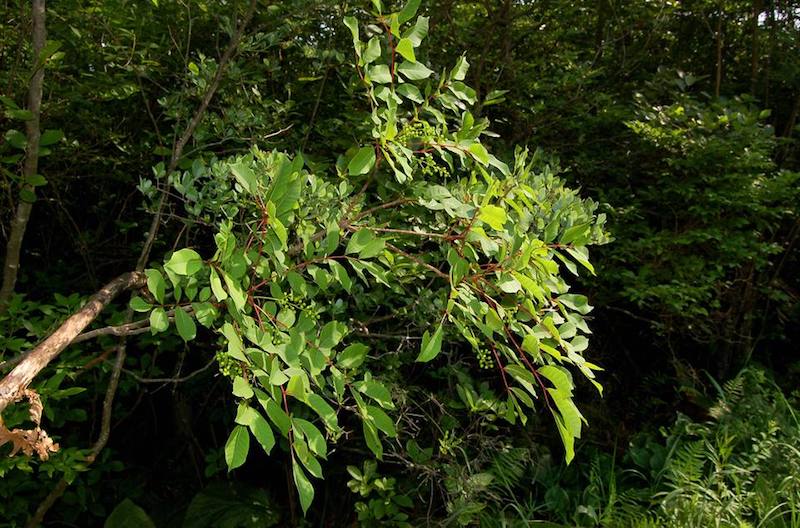Springtime for bowhunters means sheds to find, bears and turkeys to hunt, and new turf to scout for fall hunting.
Hunters spend tons of time outside. Hiking through the woods provides many benefits, including vitamin D infusions and memorable wildlife encounters. But it can also put you in contact with dangerous plants. Most woodland plants are harmless, but a few of them cause serious skin reactions when touched.
Let’s discuss a few plants you must avoid.

Poison ivy grows in almost every type of terrain except deserts. Photo Credit: Dr. Weill
You’ve probably been warned about poison ivy. Skin that touches any part of this plant suffers severe redness, itching, swelling and blisters. To avoid poison ivy remember, “Leaves of three, let them be.” Poison ivy plants have three glossy leaves. They also have green flowers and ivory-colored berries.
Poison ivy is found across most of North America, except in Alaska, Hawaii and deserts. It grows along riverbanks, and in fields and woodlands. Poison ivy changes looks as it grows. Young poison ivy looks like a small, herb-like plant. It then becomes a small tree or carpet of vines, and eventually grows into a large, hairy vine.
The plant contains urushiol, a toxic resin that causes dermatitis in roughly 2 million people annually in the U.S. If you see poison ivy, avoid it. If you have pets, keep them away from it. You can suffer poison ivy’s many pains by petting animals that walked through it. Further, if you burn poison ivy, you risk releasing its toxins into the air.

Look for leaves that grow in threes. Photo Credit: Medical News Today
The same rule, “Leaves of three, let it be,” also helps you avoid poison oak, a cousin to poison ivy. This erect plant has three leaflets that are shallowly lobed, and range in color from green to bright red, depending on the season. Poison oak has small clusters of flowers and hairy, yellow fruit. Don’t touch any part of the plant. It’s all poisonous and causes an itchy rash. Poison oak is found across most of western North America. It grows in woodlands, grasslands, and conifer and mixed broadleaf forests.

Poison Sumac grows in wet areas like swamps. Photo Credit: TheSpruce
Poison sumac is a small tree found throughout the eastern U.S. If you touch its leaves, expect a reaction similar to poison ivy and poison oak. It grows in bogs, swamps and wetlands.

Giant hogweed creates a burn rather than a rash. Photo Credit: Valley Landscape Management
Giant hogweed takes after its namesake because it’s a large, invasive plant. It grows to 14 feet tall and has hairy stalks and white flower clusters. It’s often confused for wild carrots, which can be a miserable mistake. Touching the plant, especially its sap, combined with sunlight and moisture, causes severe burns that show up in 24 to 48 hours. Burns become blisters that often cause scarring. Take extra caution to avoid getting sap in your eyes because it can cause permanent blindness. Giant hogweed is originally from Europe, and causes so much trouble that it’s a federally listed noxious weed.

These plants are very tall and have needle-like hairs. Photo Credit: Adaptive Seeds
If you touch stinging nettles, you’ll know immediately. That differs from other noxious plants, which don’t cause reactions until hours later. One brush with this plant causes a nasty, itchy, stinging rash. Stinging nettle plants are covered in sharp, hollow hairs that puncture the skin and inject histamine and other chemicals.
Stinging nettles are found across the Northern hemisphere. Plants have tiny, fuzzy flowers and leaves on the stalks, and grow several feet high. They’re most common in moist woodlands and along shaded trails and waterways.
Study the plants in your area. Your best defense is learning to identify harmful plants. Look before sitting, stepping and touching anything in the wild. Unfortunately, these plants can hide in plain sight. Be sure to wear tall socks, and long pants and sleeves to avoid direct skin contact if you accidentally brush against them.